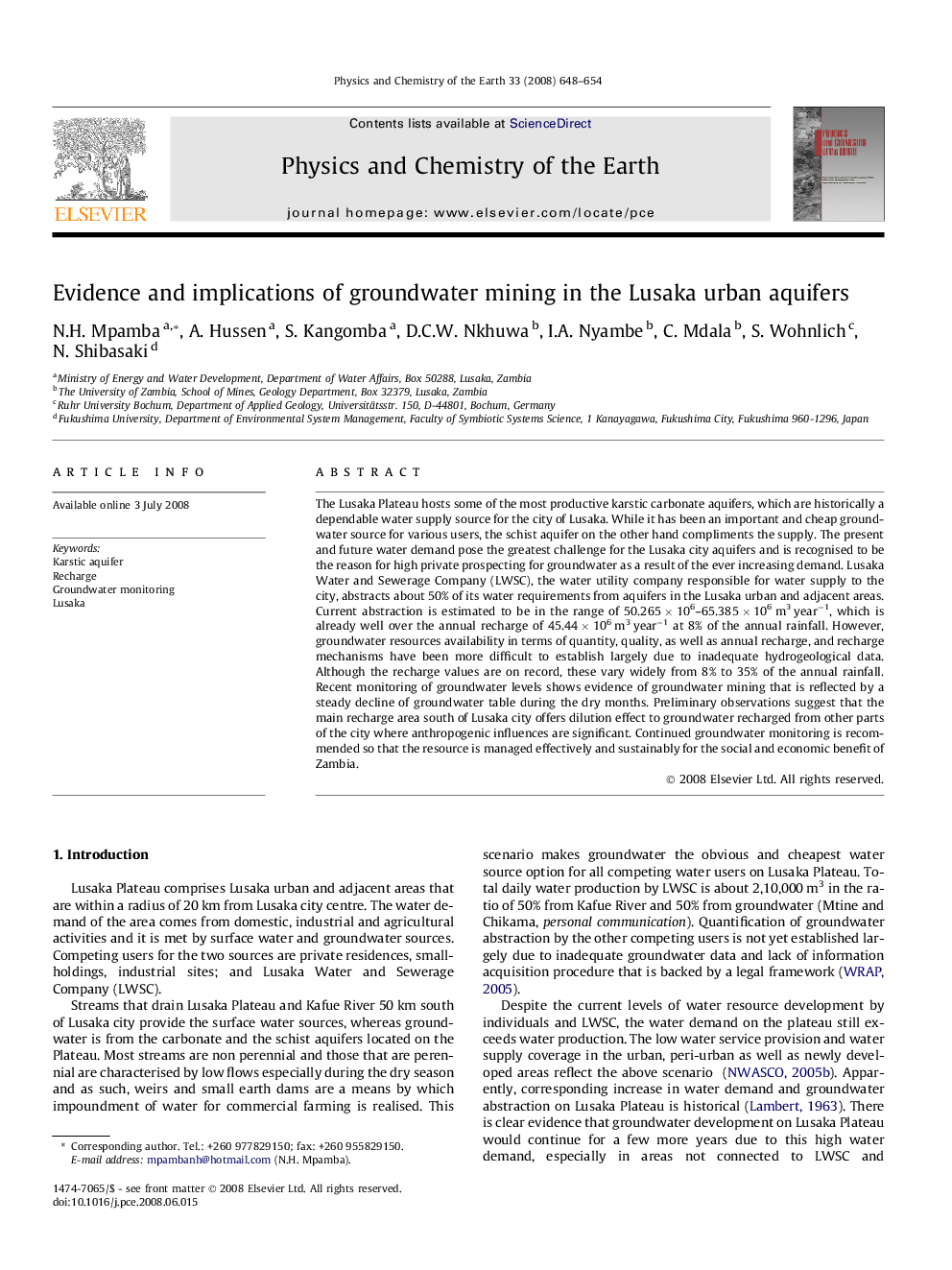| کد مقاله | کد نشریه | سال انتشار | مقاله انگلیسی | نسخه تمام متن |
|---|---|---|---|---|
| 4721718 | 1639397 | 2008 | 7 صفحه PDF | دانلود رایگان |

The Lusaka Plateau hosts some of the most productive karstic carbonate aquifers, which are historically a dependable water supply source for the city of Lusaka. While it has been an important and cheap groundwater source for various users, the schist aquifer on the other hand compliments the supply. The present and future water demand pose the greatest challenge for the Lusaka city aquifers and is recognised to be the reason for high private prospecting for groundwater as a result of the ever increasing demand. Lusaka Water and Sewerage Company (LWSC), the water utility company responsible for water supply to the city, abstracts about 50% of its water requirements from aquifers in the Lusaka urban and adjacent areas. Current abstraction is estimated to be in the range of 50.265 × 106–65.385 × 106 m3 year−1, which is already well over the annual recharge of 45.44 × 106 m3 year−1 at 8% of the annual rainfall. However, groundwater resources availability in terms of quantity, quality, as well as annual recharge, and recharge mechanisms have been more difficult to establish largely due to inadequate hydrogeological data. Although the recharge values are on record, these vary widely from 8% to 35% of the annual rainfall. Recent monitoring of groundwater levels shows evidence of groundwater mining that is reflected by a steady decline of groundwater table during the dry months. Preliminary observations suggest that the main recharge area south of Lusaka city offers dilution effect to groundwater recharged from other parts of the city where anthropogenic influences are significant. Continued groundwater monitoring is recommended so that the resource is managed effectively and sustainably for the social and economic benefit of Zambia.
Journal: Physics and Chemistry of the Earth, Parts A/B/C - Volume 33, Issues 8–13, 2008, Pages 648–654